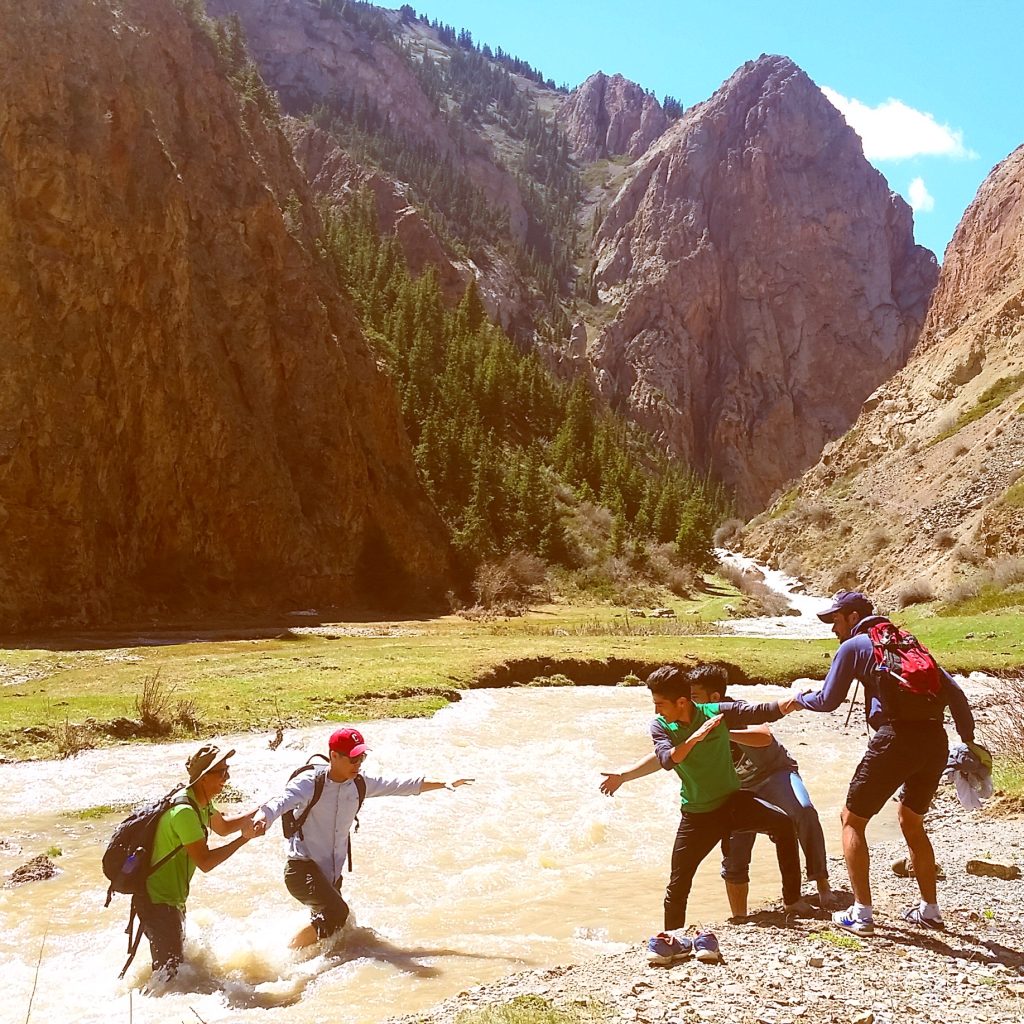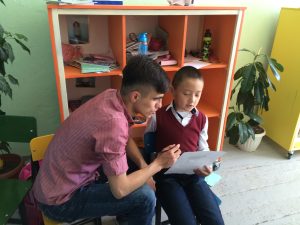16 Five Ways to Wellbeing

Over the last two decades governments have been recognizing the tremendous social costs when its citizens are struggling with stress, poor mental health and chronic unhappiness. A commission that included 30 European countries set out to define and research wellbeing. The UK research team distilled findings into five themes that communities and individuals could act on to improve their overall life satisfaction.
PURPOSE:
This activity helps people to explore five simple, but profound wellbeing actions that improve quality of life. It will also help participants develop a personal wellbeing plan.
Learning Objectives
Participants will
- Reflect on their current concept of well-being.
- Discuss the European Wellbeing Survey results.
- Create an action plan that implements one wellbeing strategy.
- Analyze their wellbeing action and how it impacted their mood and energy.
Five Ways of Wellbeing Activity Directions
- Brainstorm: Ask student to think of someone who exemplifies wellbeing. Invite participants to write down five things that these people do to stay healthy and happy.
- Small Group Discussion: Divide into small groups of three. Ask participants to share the person they chose as a wellbeing role-model and explain the behaviors that they observe have contributed to their health and vitality. Together the group needs to come to consensus on what they think are the top five actions that people can take to boost wellbeing. Give them sheets of paper where they can write their top five down and post them on the wall.
- Full Group Debrief: Come back to the full group and look at the posted well-being actions and scan for commonalities and outliers.
- Share Research Findings:Explain that researchers in Europe interviewed hundred of thousands of citizens and that these are the top five themes they discovered:

The five ways to wellbeing were developed based on a review of evidence gathered in the UK government’s 2008 Foresight Project on Mental Capital and Wellbeing. The aim was to identify five actions that are simple, universal, which anyone can do on an individual level, and for which there is evidence of an association with wellbeing. They are Connect, Be Active, TakeNotice, Keep Learning and Give. For more information and activities related to the Five Ways of Wellbeing, check out this workbook resource: 5waystowellbeingresourcepackage
6. Discussion: How are these five ways of well-being are similar or different from the ones identified by the small groups?
7. Personal Reflection in writing journals. Facilitator says: Rank these five elements of wellbeing in order, from 1-5, to indicate how much you think each element is happening in your life. Choose one that you would like to focus on to take some small steps towards increased well-being. Write an action plan with one small action you will do this week. What? When? Where? Is there someone you could invite to do this with you (this increases the chance it will happen).
8. Journal : During the following week ask participants to reflect on their overall mood and energy before and after doing their well-being action.
9. Photograph: Invite the group to take a picture of themselves implementing their action plan and they can share these images on a platform like Padlet or other on-line groups. Or, they could send the photo to the facilitator and the facilitator can compile the photos on a bulletin board, moodle or google classroom discussion posting or as part of a follow-up Power Point presentation. Check in with the group on their wellbeing activity and how it impacted mood and energy.

Further Resources that Explore the Five Ways of Wellbeing
An all-time favourite TED Talk on the power of gratitude that fits with the Five Ways of Wellbeing theme of “Noticing.” This theme includes mindful awareness of the beauty in life and gratitude and appreciation for the small things that bring us joy.
Optional Activty: Taking notice and appreciating the small things that bring joy
Singer, songwriter, and actress Dolly Parton on gratitude:
“I make a point to appreciate all the little things in my life, because I learned early that if you don’t, you get disappointed a lot. If you do, you might be pleasantly surprised quite often.
I go out and smell the air after a good, hard rain. I re-read passages from my favorite books. I hold the little treasures that somebody special gave me. By keeping my eyes open for unexpected joys, I find the world gives back more than we sometimes think.”
Source: Dream More (paraphrased)
End the “Five Ways of Wellbeing” activity with everyone sharing something they are feeling grateful for, or ask participants to keep a gratitude journal for a week, listing 5 things they are grateful for each day. Ask them to notice their mood as they are reflecting on the aspects of their lives that they appreciate.
The following Ted Talk video is a beautiful exploration of gratitude, noticing and paying attention to the world and people we care about. Gratitude and Wonder Ted Talk Louis Schwartz
